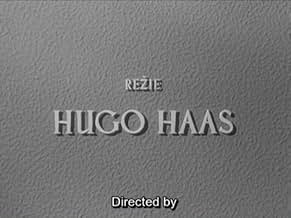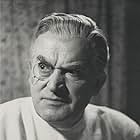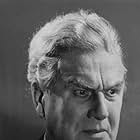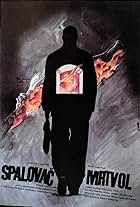Aggiungi una trama nella tua lingua"The White Sickness", a leprosy-like disease, ravages the world during a war."The White Sickness", a leprosy-like disease, ravages the world during a war."The White Sickness", a leprosy-like disease, ravages the world during a war.
- Regia
- Sceneggiatura
- Star
Eva Svobodová
- The Citizen's Daughter
- (as Eva Svobová)
Trama
Lo sapevi?
- QuizHugo Haas's debut as a producer.
- ConnessioniReferenced in Particka: Episodio #3.7 (2012)
Recensione in evidenza
This is a fascinating historical document, "Bílá Nemoc," which is translated variously as "The White Disease" (as in leprosy) or more colorfully as "Skeleton on Horseback," an anti-fascist Czechoslovak film released a year before the Munich Agreement and two years before total Nazi occupation. Viewing this today, however, it's perhaps even more arresting as a picture of belligerent governance during a pandemic. In the case of the one in film, it entirely afflicts those middle aged and older, too. In the film, a doctor (named "Galen," one assumes by parents who knew very well he would grow up to practice medicine) discovers a treatment for this novel form of old-age-killing leprosy, which he uses to treat the poor, but refuses to administer on the rich and government sponsors of war lest they actively embrace pacifism. That's bad news for the country's führer marshal and the nationalistic fervor he's whipped up in anticipation of invading a smaller nation.
Based on a play, the major drawback of the film is that it's stagy. It's a talkfest, to be sure, with characters having extended arguments on the merits of war and peace, life and death. There's also some conspicuous staging, including characters turning back repeatedly from opening doors to continue conversations they were about to leave. The camerawork, production and editing aren't too bad, though. While one montage moving from characters' feet, to their waste and, finally, head shots is the most conspicuous, the rest of the picture, too, does well to compensate for the theatrical dialogue and direction. Regardless, "Bílá Nemoc" was remarkable for sounding the alarm relatively early on the dangers of fascist nationalism in Europe in the 1930s. It would be three years even before Charlie Chaplin made "The Great Dictator" (1940), for instance, which was still an early anti-Nazi film to come from Hollywood. Unfortunately, it's message on the dangerous interactions of the contagions of politics and disease have hardly been heeded in the 83 years since, either.
Based on a play, the major drawback of the film is that it's stagy. It's a talkfest, to be sure, with characters having extended arguments on the merits of war and peace, life and death. There's also some conspicuous staging, including characters turning back repeatedly from opening doors to continue conversations they were about to leave. The camerawork, production and editing aren't too bad, though. While one montage moving from characters' feet, to their waste and, finally, head shots is the most conspicuous, the rest of the picture, too, does well to compensate for the theatrical dialogue and direction. Regardless, "Bílá Nemoc" was remarkable for sounding the alarm relatively early on the dangers of fascist nationalism in Europe in the 1930s. It would be three years even before Charlie Chaplin made "The Great Dictator" (1940), for instance, which was still an early anti-Nazi film to come from Hollywood. Unfortunately, it's message on the dangerous interactions of the contagions of politics and disease have hardly been heeded in the 83 years since, either.
- Cineanalyst
- 8 mag 2020
- Permalink
I più visti
Accedi per valutare e creare un elenco di titoli salvati per ottenere consigli personalizzati
Dettagli
- Data di uscita
- Paesi di origine
- Lingua
- Celebre anche come
- Skeleton on Horseback
- Azienda produttrice
- Vedi altri crediti dell’azienda su IMDbPro
- Tempo di esecuzione1 ora 43 minuti
- Colore
- Mix di suoni
- Proporzioni
- 1.37 : 1
Contribuisci a questa pagina
Suggerisci una modifica o aggiungi i contenuti mancanti

Divario superiore
By what name was Bílá nemoc (1937) officially released in Canada in English?
Rispondi





























